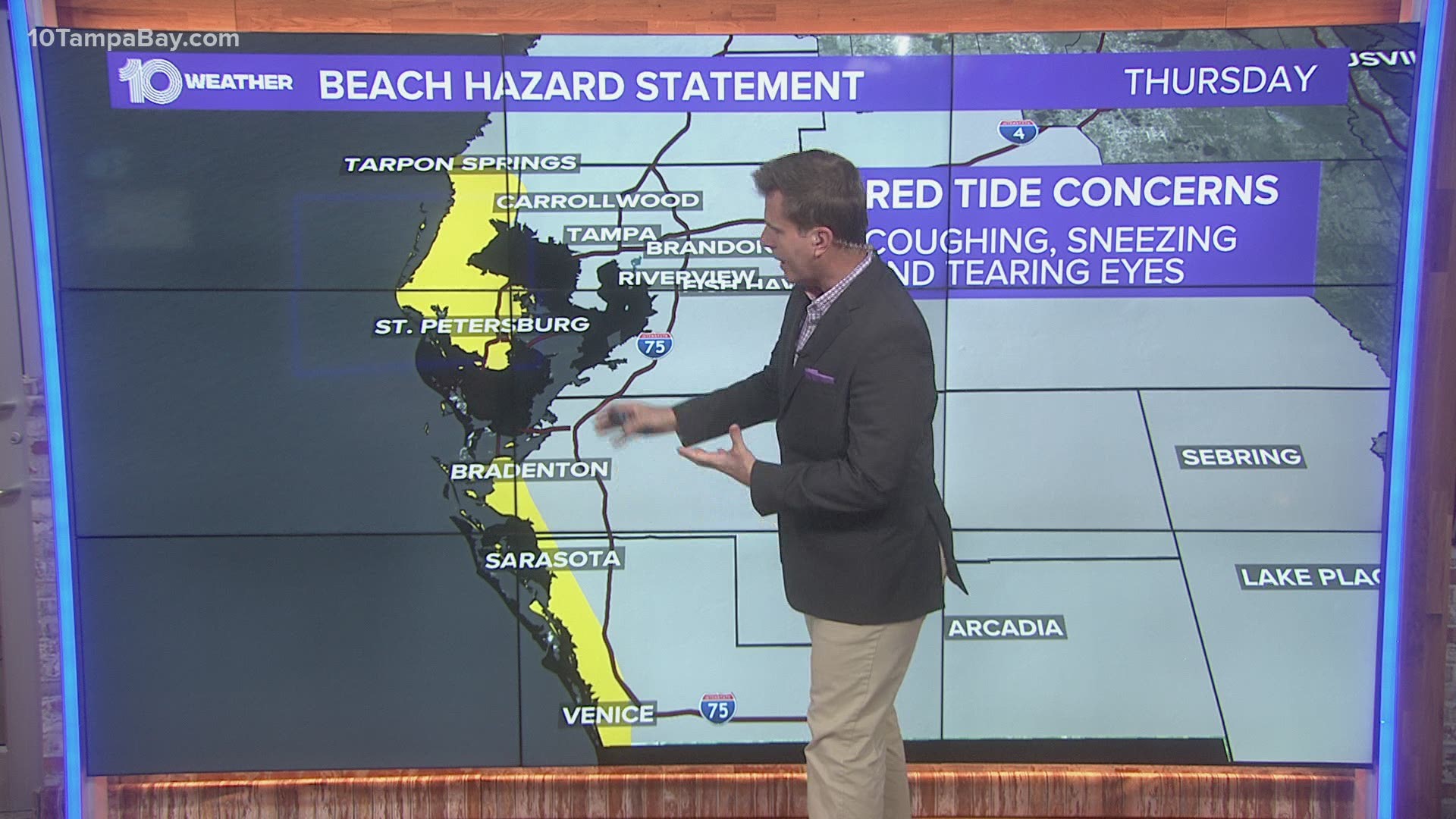PINELLAS COUNTY, Fla. — Red tide is continuing to impact waterways across the Tampa Bay area and research shows this year's emergence of the toxic algae bloom is the worst the area has seen.
Data compiled from the Florida Fish and Wildlife Conservation Commission and NOAA show red tide impacts in the Tampa Bay area over the decades, dating back to 1956. Scientists at the Tampa Bay Estuary Program (TBEP) say this year's spike in red tide algal blooms is no coincidence.
"This year, combined with the lower rainfall, as well as the nutrients we saw from Piney Point entering the system, that made this a perfect mix for red tide to grow in the bay," said Dr. Marcus Beck, a program scientist with TBEP.
As of Thursday afternoon, 1,712 tons of marine life have been collected in Pinellas County. That's 3.4 million pounds.
Daily samples from the Florida Fish and Wildlife Conservation Commission show red tide continues to plague the bay area, particularly along the coast of Pinellas County. The most recent samples show high levels of the harmful algae Karenia brevis near Treasure Island, Terra Ceia Point and North Lido Beach.
To report a fish kill to the Florida Fish and Wildlife Conservation Commission (FWC), call the hotline at 800-636-0511. For more resources, click here.
You can also find different resources to check beach conditions here.
Red tide is one of the water's deadliest enemies, and it occurs nearly every summer along Florida’s Gulf Coast. Some years, however, it's worse than others.
According to the National Oceanic and Atmospheric Administration, "red tide" is a harmful algal bloom or HAB, that is created when plants in the sea grow out of control and cause harmful toxins. Those toxins can have negative impacts on people, marine mammals, birds, fish and shellfish.
In Florida and the Gulf of Mexico, the species responsible for most red tides is called Karenia brevis, and is often abbreviated as K. brevis.
NOAA scientists say that although it's rare, red tide can cause human illness and in some rare cases be deadly.
Experts at Florida Fish and Wildlife Conservation Commission say the toxic chemicals that come from red tide affect both marine organisms and humans.
Karenia brevis produces brevetoxins that can affect the central nervous system of fish and other vertebrates, which causes these animals to die.
What other people are reading right now:
- Parts of Tampa Bay area coastline under beach hazard statement due to red tide
- How much is an Olympic gold medal worth? A lot less than you think
- Gov. DeSantis jokes about CDC's mask guidance in front of lawmakers, activists in Salt Lake City
- Clearwater's own Bobby Finke wins Olympic gold in 800-meter freestyle
- Lightning's national anthem singer moves to ICU days after COVID-19 hospitalization, husband says
- Here are the school supplies included in Florida's tax-free holiday
►Breaking news and weather alerts: Get the free 10 Tampa Bay app
►Stay In the Know! Sign up now for the Brightside Blend Newsletter

